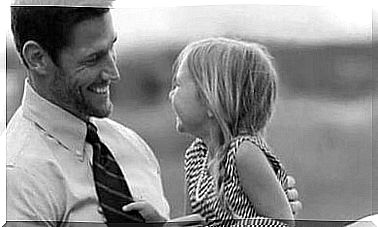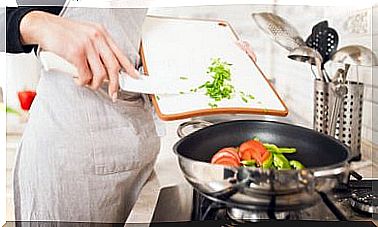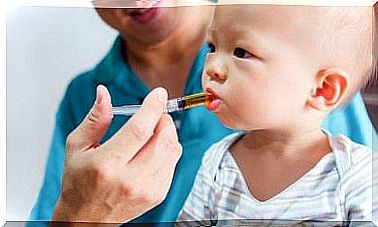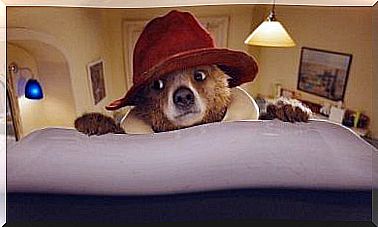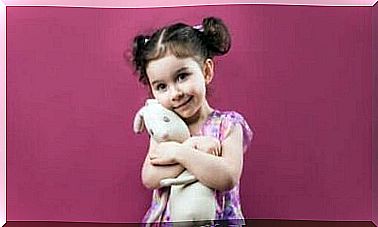The Water Cycle And How To Explain It To Children
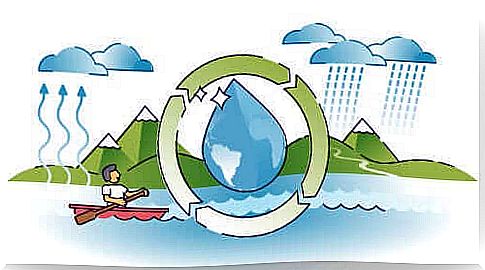
Water is one of the elements that most arouse curiosity in the little ones. Where does it come from? Why is the sea so big? Because it’s raining? These are some of the frequently asked questions, from which to start explaining to children, in simple words, what the water cycle is.
To understand this rather abstract concept, the trick is to associate it with everyday phenomena that children are familiar with. Let’s start by giving a definition of the different “forms of water”.
The water cycle for children: the states of water
Water is a chameleonic but constant element. The water cycle is nothing more than the continuous change of water states, the reason why the amount of water on our planet has maintained the same levels for millions of years. In this constant cycle the water can go through the different states:

- Liquid: This form is the most common. This is where you can begin your explanation of the water cycle for children. The examples are easy to understand and taken from everyday life, since we see and touch water in its liquid state when we take a shower, when the rain wets us or when we drink. We can also see it flowing into a river or the sea.
- Solid: When liquid water is below 0 ° C, the ways children can see solid water are in the form of ice and snow.
- Gaseous: in this state of water we can observe clouds, fog and water vapor. When you take a very hot bath or boil a pot with water, steam may form and settle on various surfaces.
Water changes: from one state to another
As soon as the little ones understand the difference and the characteristics of the three states of water, it is time to show them how the element goes from one state to another. For this reason it is necessary to define some concepts in particular:
- When water changes from a solid to a liquid state, the process is called melting. For example, if you leave an ice cube at room temperature, it slowly melts and becomes liquid water.
- If you freeze it again, the transition from liquid to solid is called solidification.
- The transition from liquid to gaseous state is called evaporation. Water evaporates when heated to high temperatures and forms water vapor. In nature, the evaporation of water from rivers and seas forms clouds, which are nothing more than the accumulation of millions of water particles.
- In the opposite situation, the one in which water passes from the gaseous state to the liquid state, we speak of condensation. This happens when the steam comes into contact with a cold surface, for example when the mirrors in the bathroom “fog up”, when we take a shower or when the water, in the gaseous state of the clouds, undergoes a sharp drop in temperature and condenses , to pour in the form of rain.
The water cycle explained to children
Once we have defined the basic concepts of the state of water and discovered what the different steps are called, we can tackle the theme of the water cycle in nature . Let’s start talking about vaporization, but we could explain it starting from any point in the cycle, because it is a constant cycle.
The energy of the Sun is the promoter par excellence of the water cycle. Solar heat reaches our planet and causes surface temperatures to rise, both of the earth and of the water of rivers, seas, oceans and lakes. At that point, the water turns into steam. Even ice is affected by heat and passes into a liquid state, evaporating too. Living things also contribute with sweat and perspiration.
When water turns into steam, it becomes light, rises through the air and forms clouds. Here, agglomerates of millions of particles accumulate. When the clouds become dense and the air temperature drops, the water condenses, turning into rain, hail or snow.
Thus, precipitation returns water to the land, sea, river or mountain, based on differences in temperature, wind, relief, etc. And the cycle begins again ..
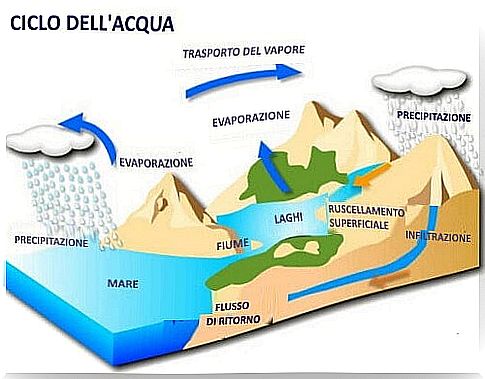
Is water a renewable resource?
Clearly water changes state and returns to regain its place in the cycle, which is why water is said to be a renewable resource. In any case, it is necessary to take care of it and use it responsibly, since its quantity is finite and it is not so abundant, especially drinking water, which is water suitable for human consumption.
In this regard, both at home and at school we can do something to conserve water by implementing the following measures:
- Don’t leave the tap running when you need to brush your teeth.
- Close leaking taps well.
- Take a quick shower instead of a bath.
- Don’t play with water.
Explaining the water cycle to children is easy, as you can find many examples in daily life. Also, if you do it by adding the theme of safeguarding our planet, you will certainly keep their attention alive.

